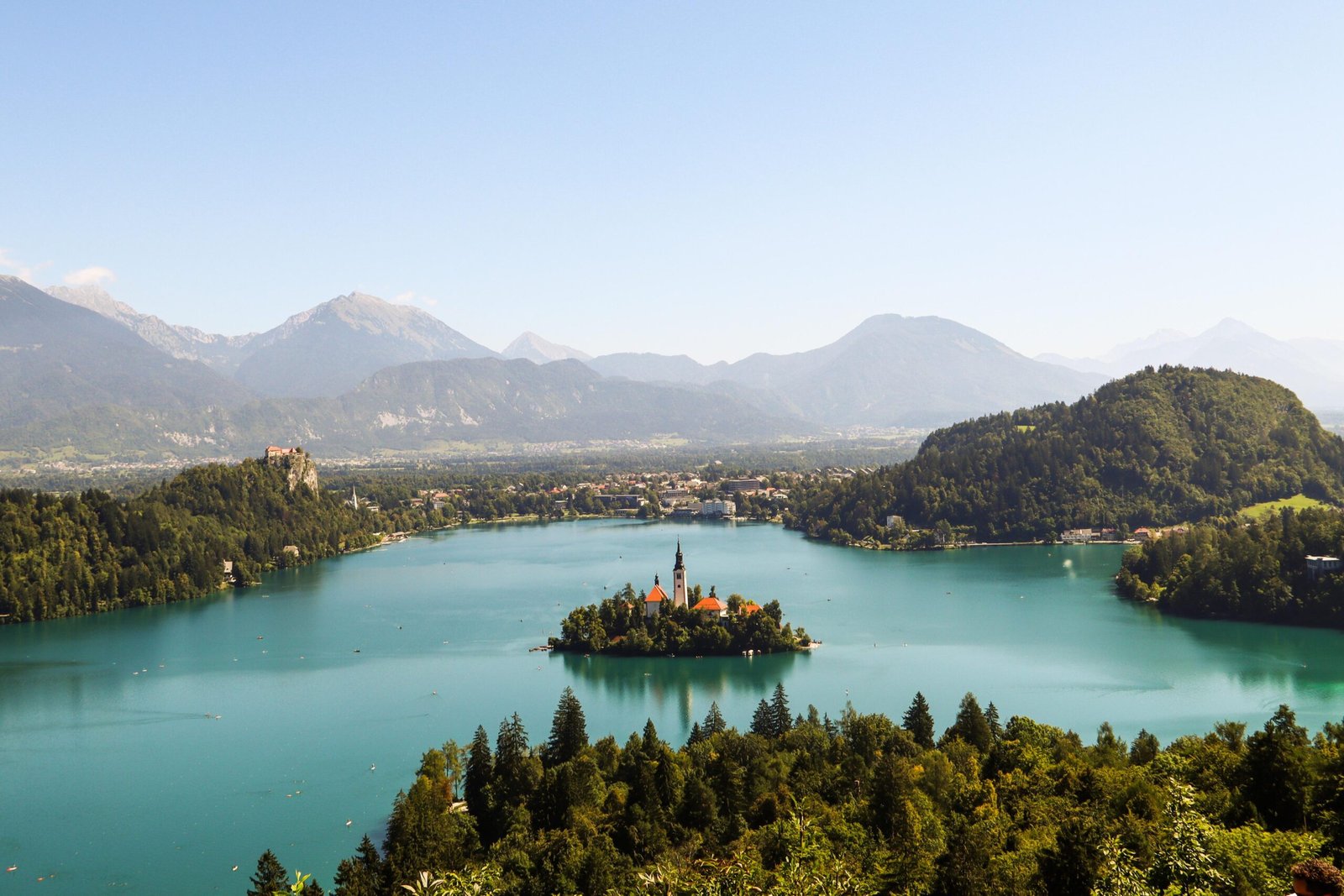An entire village vanished without a trace and to this day, no one knows why. Explore the eerie mystery of the village where everyone disappeared and left behind only questions. The Village Where Everyone Disappeared Still Unsolved Imagine arriving in a peaceful village, only to find every home abandoned, meals half-eaten, fires still smoldering, and not a single soul in sight. No signs of struggle.No mass migration.No goodbye notes.Just…emptiness. This isn’t fiction. It happened and no one has ever solved it. There are a few mysterious cases of entire villages vanishing from the face of the Earth. Let us explore one of the most chilling: the unsolved disappearance of the Anjikuni Village in Canada. The Anjikuni Lake Mystery: A Canadian Cold Case In 1930, an experienced fur trapper named Joe Labelle snowshoed into a remote Inuit settlement near Anjikuni Lake, in the Kivalliq region of Nunavut. He expected the usual warm welcome. Instead, what he found chilled him more than the Arctic wind. What Did He Find? Huts were empty, but fires still burned Clothes, rifles, food everything was left behind Sled dogs were found dead and buried in snow Graves appeared to be dug up in the nearby burial grounds No signs of a struggle or mass movement The entire population over 30 people had vanished. Joe Labelle ran to the nearest telegraph office and sent a message to the Royal Canadian Mounted Police (RCMP). What Did the RCMP Find? When investigators arrived: They confirmed the village was deserted No footprints leading away No signs of migration, murder, or abduction Even a pot of stew still warm over the fire It was as if the people had simply… vanished mid-step. Despite a full investigation, the RCMP closed the case without answers. Theories About What Happened As with any great mystery, theories abound. Here are the most popular and the most bizarre: 1. Animal Attack or Harsh Winter? Unlikely. Supplies, food, and weapons were left behind. No struggle was evident. Why would an entire village flee into the freezing Arctic without taking anything? 2. Alien Abduction (Yes, Really) UFO sightings were reported in the region before and after the incident. Some claim a “cylindrical object” was seen in the sky around the time of the disappearance. Sci-fi? Maybe. But it’s one of the most commonly cited explanations. 3. Supernatural or Cursed Ground Some believe the village was built on sacred or forbidden land. The disturbed graves fueled speculation about curses, spirits, or ancient taboos being violated. 4. Mass Relocation or Migration Could the villagers have migrated? Possible but why leave everything behind, including valuables, food, and even dogs? 5. Was It a Hoax? Some skeptics claim journalist Emmitt E. Kelleher, who first published the story in a 1930 newspaper, may have exaggerated or fabricated parts of the tale. However, local Inuit oral history does mention strange disappearances and ghost villages. Why This Mystery Still Haunts Us The Anjikuni Village case remains officially unsolved with no bodies, no evidence, and no confirmed explanation nearly a century later. It stands as one of the most enduring and haunting cases of mass disappearance in modern history. And it is not the only one… Other Vanishing Villages Worth Exploring: Roanoke Colony (1587, USA): Over 100 colonists vanished, leaving behind only the word “Croatoan” carved into a tree. Hoer Verde (1923, Brazil): 600 residents vanished, reportedly leaving behind a message: “There is no salvation.” Kuldhara (India, 1800s): An entire village was abandoned overnight, with legends of a curse keeping it deserted to this day. Did You Know? Inuit oral traditions include stories of “shadow people” and spirits of the ice some of which predate the Anjikuni event. There are over 1,000 documented cases of missing settlements or ghost villages around the world. The RCMP never officially explained the Anjikuni mystery, leaving it open to interpretation even today. The Takeaway Some mysteries aren’t meant to be solved. Whether it was foul play, something otherworldly, or a misremembered tale turned legend, the story of the vanished village at Anjikuni Lake continues to capture imaginations and raise eyebrows. A silent village. Warm fires. No footprints.And a question that refuses to die.
The City That Moves Every Year By Law!
A city that legally moves its entire government every year? Discover the fascinating true story of the city that packs up and relocates by law. The City That Moves Every Year By Law! Cities are known for their skylines, history, and….permanence. But what if your entire city government was required to move every single year? No, this isn’t a quirky tradition or fictional tale. It is real and it is happening in South Africa. Welcome to Bloemfontein, Pretoria, and Cape Town the three capital cities of one nation, where government literally moves by law every year. Let us unravel one of the strangest and most fascinating political arrangements in the world. South Africa’s Three Capitals: A Legal Balancing Act Unlike most countries that have one capital, South Africa has three and each serves a different function: Pretoria – Administrative Capital (where the President and executive branch reside) Bloemfontein – Judicial Capital (home of the Supreme Court of Appeal) Cape Town – Legislative Capital (where Parliament meets) And every year, by law, South Africa’s national government physically shifts its core operations between these cities. Why Does the Government Move? This unusual arrangement dates back to the end of the Second Anglo-Boer War (1899–1902). To create national unity between former rivals (the British and the Boers), a compromise was struck: Each major region got to host a branch of government. None of the cities would dominate. Moving the government between them became part of the constitutional balance. It is a symbolic and practical compromise to prevent political favoritism and keep unity across diverse provinces. How the Move Works Every year, at the start of a new parliamentary session: Members of Parliament travel from Pretoria to Cape Town. Key documents, staff, and logistics are transported across 1,400 km. The State of the Nation Address is delivered in Cape Town. Once sessions conclude, operations shift again. This moving process involves months of planning and millions in logistics but it is enshrined in how the country functions. The Controversy: Is It Worth It? South Africans have debated whether this tradition should continue: Critics argue: It is too expensive, costing millions annually It causes delays, inefficiencies, and confusion The country could operate better with a single capital city Supporters counter: It maintains regional representation and national unity It is part of South Africa’s unique identity Removing it could cause political imbalance To this day, despite debates and proposals, the “city shuffle” remains lawfully intact. Are There Other Countries That Move Their Governments? Not quite like South Africa, but: The Netherlands has Amsterdam as capital, but the government sits in The Hague. Bolivia has two capitals: La Paz (administrative) and Sucre (constitutional). Malaysia shifted most government functions from Kuala Lumpur to Putrajaya but didn’t abandon either city. Still, only South Africa legally moves its core government operations across cities each year. Did You Know? Cape Town is the oldest city in South Africa, known as the “Mother City” Pretoria is home to the Union Buildings, the official seat of the presidency South Africa’s Parliament must open in Cape Town, even if it later convenes elsewhere The Takeaway In a world where governments grow more centralized, South Africa stands out with a system that literally spreads the power and moves it every year. It is not just symbolic. It is legal. It is national. And it is uniquely South African. So the next time your city has traffic delays or your mayor’s late for a meeting, just be glad your entire government isn’t relocating 800 miles by law.
How Octopuses Outsmart Scientists Again and Again
They can pick locks, escape labs, and even recognize people. Discover how octopuses continue to outsmart scientists and why their alien-like intelligence baffles researchers. How Octopuses Outsmart Scientists Again and Again They can open jars, escape through impossibly small cracks, and even recognize individual humans. No, we are not talking about trained pets or AI robots we are talking about octopuses, the ocean’s most mysterious and mind-blowing escape artists. These eight-armed invertebrates have shocked scientists for decades by consistently outsmarting them. Here is how these underwater masterminds are rewriting everything we thought we knew about animal intelligence. Octopuses: The Outsiders of Intelligence Octopuses (yes, the plural is correct!) don’t just behave intelligently they do so in ways that seem alien to our understanding of the brain. They have nine brains (one central, and one mini-brain in each arm) Their neurons are spread throughout their body, not just the head They have blue blood, three hearts, and camouflage skin And they are solitary, with no social learning yet still brilliant In short, octopuses evolved intelligence completely independently from humans, mammals, or birds. That makes them one of the best models for understanding alternative intelligence and they keep surprising us. How They Outsmart Scientists Again and Again 1. Escaping Lab Tanks Like Houdini Octopuses are notoriously hard to keep in captivity. Why? Because they can: Open child-proof lids Unscrew glass jars (from the inside!) Slip through holes the size of a coin Climb out of tanks at night and explore the lab Case Study: At New Zealand’s National Aquarium, an octopus named Inky escaped his enclosure, slid across the floor, and squeezed through a 6-inch drain pipe to freedom in the ocean. Scientists still don’t know how he planned it but cameras show he waited until no one was looking. 2. Solving Puzzles That Rival Monkeys In lab experiments, octopuses have: Solved mazes Used tools (like coconut shells and rocks) Remembered specific individuals friendly or hostile Displayed problem-solving, short-term memory, and trial-and-error learning One octopus, upon becoming annoyed with a specific researcher, squirted water at them daily. Another memorized feeding schedules and refused to cooperate when not fed on time. They are not just smart they are sassy. 3. Changing Color and Texture Instantly Octopuses can mimic rocks, coral, or other animals in real-time, using thousands of chromatophores (color cells) and muscular skin control. But here is the twist: octopuses are color-blind. So how do they match their surroundings? Scientists still can’t fully explain it only that octopuses seem to “see” with their skin and respond to light in ways we don’t yet understand. 4. Genetic Weirdness That Defies Biology Octopus DNA is unlike any other. They can edit their own RNA, changing how their genes work on the fly Their genome is as complex as that of mammals They possess genes linked to brain development previously found only in vertebrates Some researchers have even jokingly asked: “Are octopuses aliens?” (Seriously there is a peer-reviewed paper titled that.) Did You Know? Octopuses can taste with their arms They often play with objects considered a sign of intelligence When bored or frustrated, octopuses have been observed throwing things, rearranging their tanks, and even flooding labs Why It Matters Understanding how octopuses think could unlock new insights into: Brain evolution Artificial intelligence models Alternative consciousness and intelligence pathways Even inter-species communication As neuroscientist Jennifer Mather put it: “The octopus is the closest we’ll come to meeting an intelligent alien.”
Why You are More Creative in the Shower (Backed by Science)
Ever wondered why your best ideas strike in the shower? Discover the surprising science behind shower creativity and how you can hack your brain for more breakthroughs. Why You are More Creative in the Shower (Backed by Science) You are standing under the warm stream of water, shampoo in your hair, when it hits youThe perfect idea.A solution to that problem you couldn’t solve yesterday.A plot twist. A startup concept. A brilliant line of poetry. Sound familiar? Showers are the birthplace of genius ideas for millions of people and science now knows why. Here is what is really happening in your brain when creativity strikes in the shower and how to unlock that genius more often. The “Shower Effect” Is Real You are not imagining it. Psychologists, neuroscientists, and researchers have confirmed that we are often most creative during mundane, relaxing activities and showering tops the list. Why? It comes down to a few key science-backed reasons: 1. Your Brain Switches to “Default Mode” When you are not intensely focused like when you are showering, walking, or daydreaming your brain enters a state called the default mode network (DMN). This state is where your mind: Wanders freely Makes unexpected connections Revisits memories, emotions, and ideas Simulates what-ifs and possibilities In DMN mode, you are not actively trying to be creative your brain just is. And often, that is when lightning strikes. 2. Relaxation Sparks Insight Showers are warm, rhythmic, and comforting. This helps reduce cortisol (stress hormone) and increases dopamine a key neurotransmitter linked to pleasure and creativity. A relaxed brain: Stops filtering out “weird” ideas Takes creative risks Allows intuition to surface That is why your shower thoughts can feel bold, hilarious, or even bizarre and often, they work. A relaxed mind is a more open and imaginative mind. 3. No Distractions = Deep Thought In the shower, there are: No phones buzzing No social media scrolling No meetings or multitasking This rare mental silence creates space for the brain to explore deeper thoughts and connect dots you didn’t know were connected. Psychologist Scott Barry Kaufman calls it “creative incubation” your brain continues working on problems even when you are not trying. 4. Repetitive Actions Trigger Flow The act of lathering, rinsing, or letting water hit your skin is rhythmic and automatic which helps your mind enter a “flow-lite” state. In this mild flow, you are present, peaceful, and non-critical a perfect cocktail for ideas to rise up from your subconscious. Backed by Science: Real Research 2019 Study (University of Graz): Found that mind-wandering during low-effort tasks led to more original ideas than during focused work. Kaufman & Gregoire (Wired to Create): Identified showers as top creativity boosters, second only to sleep. Creativity researcher Alice Flaherty: Linked dopamine surges to sudden moments of insight especially in environments like showers or walks. Did You Know? 72% of people say they get their best ideas in the shower Cold showers can stimulate alertness, but warm ones boost creative relaxation The word “Eureka” (I’ve found it!) was famously yelled by Archimedes while taking a bath How to Unlock Your Own “Shower Genius” You don’t need to be a scientist to benefit from the shower effect. Try this: 1. Take “Thinking Showers” Dedicate a shower to thinking about a problem, goal, or idea. Don’t force it just let your mind wander. 2. Add Music or Silence Play calming music or enjoy the silence. Either can elevate creative thinking. 3. Keep a Waterproof Notepad Yes, they exist. Capture those fleeting thoughts before they slip down the drain. 4. Meditate or Breathe Use the shower as a brief mindfulness moment. Your brain will thank you. The Takeaway Your best ideas don’t always come at your desk. Sometimes, they come when you step away, let go, and let your brain do its quiet magic under the steam, the splash, and the calm of your morning routine. So the next time someone calls your long showers a waste of time, just say:“I’m brainstorming.”




